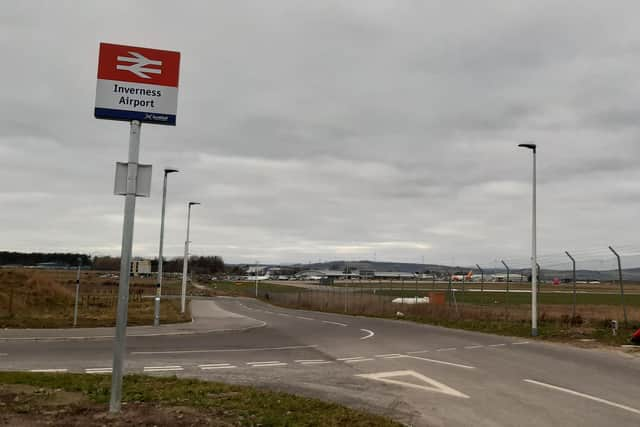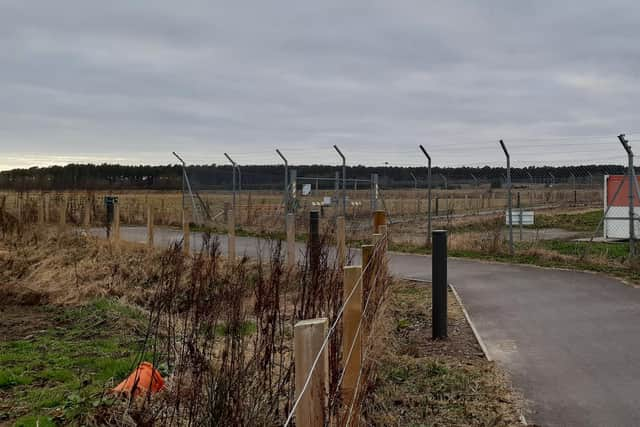Inverness Airport's new rail station may be revolutionary (and not just for fans of Wayne's World) – Alastair Dalton
This was despite being aware that, in addition to a bus link, an “active travel path” had been built to connect Inverness Airport station with the passenger terminal. I visualised it as a widened pavement on a busy road that paid lip service to the notion that you could walk, wheel or cycle between train and plane.
However, I was delighted to be entirely wrong, finding the route to be a traffic-free path pretty much direct from the station platform to the terminal building. The added advantage is that you can see one from the other, providing that additional reassurance you’re heading in the right direction – and that it really isn’t that far.
Advertisement
Hide AdAdvertisement
Hide AdIt’s about a 15-minute walk and among those I saw using it were several people with wheelie suitcases. The path skirts the runway, with a dog-leg round its western end, reminding me of the scene in 90s film Wayne’s World in which Wayne and Garth lie back on a car bonnet to watch aircraft taking off right above them. Though I don’t think you’d get quite the same effect from a Loganair plane lifting off for Stornoway.


While the path is welcome, the signage when I visited a month after the station’s opening was poor, with temporary-looking direction indicators attached to lamp posts, and I don’t recall seeing any signs to the station from the terminal, from which it’s not very clear where the path starts on the other side of a car park.
There have also been criticisms about the frequency of trains and the fact there are already buses between Inverness and the airport.
However, passengers and airport staff are also likely to come from the opposite direction – Moray and Aberdeenshire. The station also serves the surrounding area, including the expanding settlement of Tornagrain whose population is expected to reach 10,000 over the coming decades.
Touring the station with signalling firm Siemens Mobility brought some surprises, both positive and negative. At a glance, it looks very much the same as the current crop of new Scottish stations, whose modular construction is understandable as it reduces costs. However, I was perplexed to see that while some trains from both directions use the platform nearest the airport and car park, some of the shorter trains which form the majority of those on the line stopped at the far end, some distance from the waiting shelter and exit.


On the plus side, behind the scenes, the station’s signalling system is potentially revolutionary and could lead to significant savings in running costs across the Scottish network. Even to my non-expert eye, the colour light signals looked brighter, thanks to the use of LED bulbs, but the system uses a fraction of the voltage of equipment elsewhere – 24 volts compared to the normal 650v.
In a Scottish first, it was also installed on the route pre-built, known as “plug and play”, removing the need for lengthy line closures as part of the traditional on-site construction, which Siemens said had achieved savings of around 25 per cent. With rail use needing to double to meet Scotland’s emissions targets, this could be an important development.
Comments
Want to join the conversation? Please or to comment on this article.